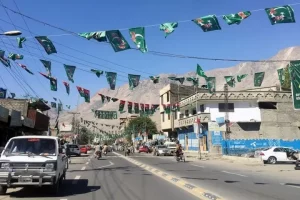Overseas remittances in Nepal have risen notwithstanding the Covid 19 pandemic. According to Nepal Times, inflow of remittances between July 2020 to May 2021 stood at (Nepalese) Rs 810 billion up 19.2 per cent compared to the corresponding period in the previous year.
“Despite the pandemic, and perhaps because of it, Nepalis send money to families that had lost their incomes back home during the lockdown and the economic slump,” the news organisation said. For the people of Nepal, the Gulf countries besides Malaysia remain the favourite migration destinations.
Remittances form an integral part of the Nepal’s economy contributing over 25 per cent to the country’s gross domestic product. “ But this also shows that a large number of Nepalese — especially the youth — move out of the country in search of good jobs and higher income as there are not many opportunities in Nepal,” a foreign policy watcher told India Narrative.
Also read: Nepali migrant workers return to India as covid-19 second wave ebbs
While an increase in remittances has been come as a boon to Nepalese Prime Minister KP Oli, as it has substantially cushioned the economy, it could also prove to be a cause for concern as the country gears up for general elections in November. Amid the ravaging second Covid 19 wave which has severely dented Nepal’s economy, the issue of rising unemployment and under-employment could pose a challenge for Prime Minister KP Oli.
“Importantly this is also an indicator that there is inadequate employment generation in the country,” the analyst who is working with an Indian research outfit said on condition of anonymity.
The International Labour Organisation, earlier, said that large number of labour force, especially the youth have opted overseas migration in search of higher income and dignity at work.
The World Bank in its report said that over the years, remittance inflows in Nepal have supported private consumption, poverty reduction, government revenues, and foreign exchange reserves.
Also read: Nepal Development Update
The multilateral agency however said that over dependence on remittances has driven real appreciation of the exchange rate while undermining export competitiveness. It has also encouraged imports.
The Nepal government in a document pointed out that labour migration has become one of the defining characteristics of Nepal’s socio-economic landscape. It also said that Nepali workers have spread out throughout the globe in search of employment. Most Nepalese travel to Gulf countries besides Malaysia.
Two years ago, Oli had introduced an ambitious employment generation scheme with an allocation of Rs 3.1 billion but it has failed to deliver.
The Observer Research Foundation (ORF) in a study published six months ago said that on account of the Coronavirus pandemic, 81 per cent of the workers in the informal sector and 1.4 million in home-based work are at severe risk of losing jobs.
“If the trend continues, there could be more Nepalese looking to leave the country in search of jobs,” the analyst said.




















